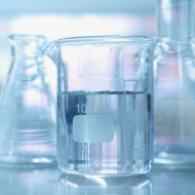Benefits of the use of Additives or Blended Caustic Products for Effective CIP Soil Removal
Sodium hydroxide (caustic) or chlorinated alkaline cleaners (at pH 10–13) are commonly used in food and beverage manufacturing CIP (cleaning in place) processes to remove proteinaceous soils because of their efficacy in peptizing the bonds that hold proteins together.
During the cleaning process, interactions between proteins, carbohydrates and minerals can make proteins more resistant to the cleaning chemistry and produce the following conditions:
- An increased rate of the Maillard reaction, resulting in strong brown colours
- Caramelisation of reducing sugars with the formation of colloidal brown pigments
- High foaming due to saponification of fat
- Precipitation of calcium hydroxides and calcium carbonates due to water hardness
- Crystallization due to a high freezing point
As a result, time spent on cleaning and sanitation is increased, which could impact on the production schedule, and more cleaning chemical is used, which could increase costs.

Depending on the conditions specific to the processing plant and cleaning requirements, using a blended caustic product, or the inclusion of an additive to caustic, could improve the overall cleaning result and increase the efficiency of CIP processes. Moreover, reducing the concentration of caustic in the cleaning chemistry formulation will reduce the neutralisation requirement of the effluent system.
Some Examples and Benefits of Adjusting the Caustic Concentration in the Cleaning Chemistry
- The use of chelating and sequestering agents such as EDTA (ethylenediaminetetraacetic acid), MGDA (methylglycinediacetic acid), and IDS (iminodisuccinate) tolerate a higher water hardness and prevent the precipitation of calcium deposits by solubilising precipitated mineral salts in the matrix.
- Threshold inhibitors such as phosphonates and polyacrylates reduce/prevent water hardness scaling and aid free rinsing. They also aid detergency by suspending soils in solution, preventing them from re-deposition onto process surfaces.
- Specific non-ionic surfactants will prevent the creation of excessive foam and allow for faster emulsification and dispersion of the soil without viscosity increase, preventing a redeposit on the cleaned surface.
- The used surfactants will also reduce the surface tension, allowing better wetting and penetration of the soil to allow for a faster rinse (sodium hydroxide has a measured surface tension of 85 mN/m, the addition of an additive reduces this to <30 mN/m).
- The correct choice of additives will improve the stability of the formulation during winter conditions.
Reviewing your Cleaning Chemistry for a Better CIP Result
During the cleaning process, interactions between proteins, carbohydrates and minerals can make proteins more resistant to the cleaning chemistry
Diversey's Knowledge-based Services portfolio addresses key industry challenges under five core pillars of focus; Productivity, Water, Energy, Yield and Food Safety. All have a common goal of continually improving food safety and operational efficiency in food and beverage processing.
One of the services available is CIPCheck. During a CIPCheck, our sector specialists will:
- Review the cleaning chemistry to ensure it is suitable to remove the soils deposited in all production runs and will deliver repeatable cleans with each cycle.
- Recommend alternative formulations that could produce better results.
- Conduct additional assessments into the cleaning result, microbiological standards, and specific soils or allergens (as necessary).
- Map CIP water, energy, and chemical usage, and measure wash cycle times to uncover optimisation opportunities.
- Evaluate operating efficiency and recommend changes to improve utilization and reduce cost.
- Provide help and support to implement changes in Standard Operating Procedures and document new processes and results to satisfy CIP validation requirements.
The CIPCheck programme provides a methodology for food, beverage and dairy processors to achieve the best cost of CIP clean possible whilst minimizing factory downtime. Selection of the most suitable cleaning chemistry, combined with information management systems, training and optimization plans will deliver real benefits and quantifiable savings for each site.
Monitor Resource Consumption for Efficiency and Cost Control - IntelliCIP
Our IntelliCIP cloud-based, data analysis platform for CIP data provides an easy-to-use visualisation of chemical, water and energy usage for each CIP run in a summary dashboard. Consumption and related costs can be monitored alongside tools to help you better understand your CIP processes and where opportunities for optimization exist.







